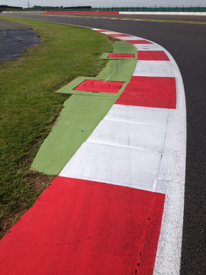For those of you who are fans of Formula One, there is probably only one thing you will remember from the 2013 British Grand Prix at the Silverstone circuit. Tyres. With six drivers suffering from tyre failures throughout the race weekend, Pirelli (the sport’s tyre provider) certainly have some difficult questions to answer.

Something Isn’t Quite Right Here
There had already been some delamination of the tyres (the rubber layer detaching from the metal underneath) during the Spanish Grand Prix back in May, but with no faults since then, everyone assumed Pirelli had fixed the issue. Now it seems the problems have not been fixed, and the extreme failures at Silverstone have brought into question the safety of the drivers, with Lewis Hamilton, who suffered a failure, even stating, “It was the first time in my career I’ve ever felt it was dangerous”.

The Likely Culprit
So what exactly is causing the problem? At the moment, the general consensus is that the blowouts were the result of an unlikely combination of factors including harsh kerbs, fast corners and weak tyre sidewalls. The current theory centres on turn 4. The racing line through this turn cuts the corner just enough for the inside wall of the left rear tyre to rub against the kerbs at the edge of the track. While the kerb is no more than 1 inch high, at the high speeds involved, rubbing against that small edge can seriously weaken the tyre wall, especially when it is being consistently driven over for so many laps.
Another factor which is not immediately obvious is the tyre pressure, which was lowered to increase durability. As you can see with a flat bike tyre, when pressure is low, the part of the tyre in contact with the road flattens, and there is a deformation which pushes the sides of the tyre outward. The situation for the tyres of a Formula One car is fundamentally the same. The area of rubber that splays out at the bottom of the tyre is, due to the deformation, under more pressure than the rest. It is therefore the weakest part, and you can see with bike tyres that this area of weakness moves further out to the side when the pressure inside the tyre is decreased. The low pressures on Sunday’s race therefore pushed the weakest point of the tyre away from the centre and towards the corner, which is the area that was in contact with the sharp kerb. The combination of this low pressure and the sharp kerb meant that the drivers were effectively cutting the weakest part of the tyre with a serrated edge every time they drove the corner, which is clearly a big issue.
Not Just a Sack of Air
Even with cuts in the rubber, however, the tyres used by Formula One cars have been designed to hold together and not explode. Unlike the tyres on a road car, underneath the rubber layer is a steel belt. This runs tangentially to the axle and is there to give extra structural rigidity and prevent complete tyre explosions in the event of a puncture, which is exactly what we have seen in previous races, such as the Spanish Grand Prix in Barcelona. There, the tyres had delamination problems which caused the rubber layer to basically fall off, but there were no explosions such as those observed on Sunday, so clearly something else is going on. The culprits are again thought to be due to the kerbs at turn 4 and the exit of turn 13, which, when driven over at high speeds, vibrate the wheel and send a shockwave through the tyre. These shockwaves are thought to have been exacerbated by the steel belt within the tyre, which was vibrating at close to resonant frequency. As the vibrations were then dampened, the tyres are thought to have heated to a point where the structural rigidity and temperature reached dangerous levels.
As far as the Pirelli forensic team can tell, these conditions, which are specific to the Silverstone circuit, are to blame for the catastrophic failures of the race. As the story develops, more evidence will almost certainly emerge, but there is unquestionably some very interesting and unusual physics at work here, physics which highlights just how technical and fascinating the world of high speed racing really is.
![Bang! The Physics Behind the Silverstone Tyre Failures For those of you who are fans of Formula One, there is probably only one thing you will remember from the 2013 British Grand Prix […]](/wp-content/uploads/2012/02/Blog-image-01_Bang-620x300.png)